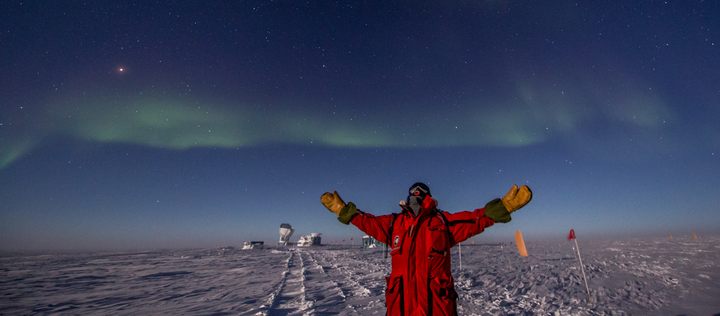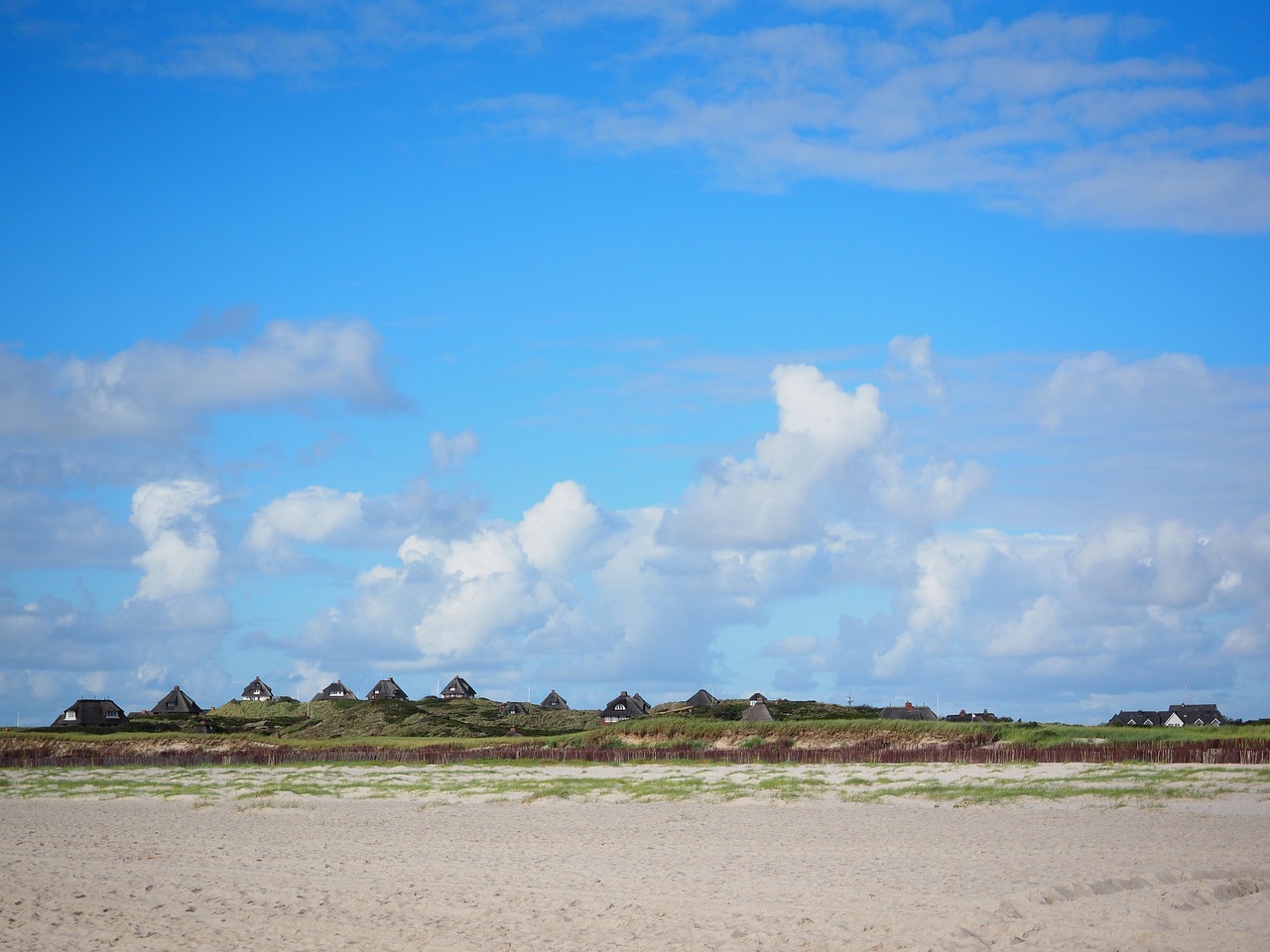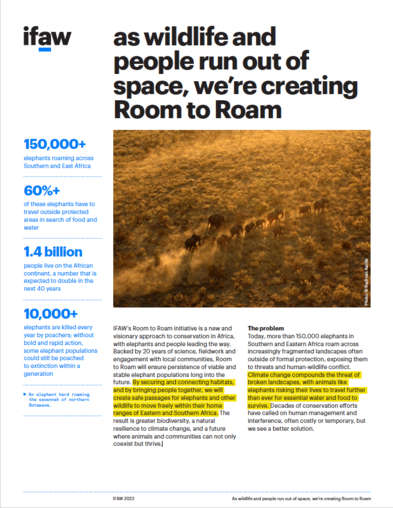Table of Contents
The vast and frozen expanse of Antarctica, Earth’s southernmost continent, is renowned for its extreme conditions and pristine wilderness. Yet, within this icy realm, a remarkable human presence thrives – the Antarctic research stations. These remote outposts, scattered across the continent, serve as hubs for scientific exploration and international collaboration. In this article, we delve into the world of Antarctic research stations, shedding light on the unique communities that inhabit this remote and challenging environment.
The vast and frozen expanse of Antarctica, often described as Earth’s last frontier, stands as an awe-inspiring testament to nature’s extremes and pristine beauty. But amid the icy solitude of this southernmost continent, there exists a thriving human presence – the Antarctic research stations. These remote outposts, strategically scattered across Antarctica, represent humanity’s collective endeavor to unlock the secrets of this frozen realm. In this article, we embark on an exploration of the intriguing world of Antarctic research stations, revealing the exceptional communities that call this remote and inhospitable environment their temporary home.
The Essence of Exploration: Antarctic research stations embody the spirit of exploration and scientific discovery. They serve as critical bases for a diverse range of scientific disciplines, from glaciology and climate science to astronomy and marine biology. These facilities enable scientists from around the world to conduct groundbreaking research in some of the most extreme conditions on Earth.
International Collaboration: Perhaps one of the most remarkable aspects of Antarctic research stations is the level of international collaboration they foster. Antarctica is governed by the Antarctic Treaty System, a collective agreement among countries to ensure the region is used exclusively for peaceful and scientific purposes. Research stations symbolize the shared commitment of nations to the pursuit of knowledge and the preservation of this pristine wilderness.
Life in Isolation: Living in Antarctica is an exercise in isolation and self-sufficiency. During the long, harsh winter months, research station inhabitants often find themselves cut off from the outside world, with extreme cold, perpetual darkness, and fierce winds as their constant companions. Yet, they thrive by forming close-knit communities where collaboration, adaptability, and mutual support are paramount.
Architectural Marvels: The design and construction of Antarctic research stations are feats of engineering and innovation. These facilities are meticulously planned to withstand the continent’s brutal weather conditions. They feature advanced technologies, energy-efficient systems, and sustainable practices to minimize their impact on the fragile Antarctic ecosystem.
Challenges of Daily Life: Survival in Antarctica comes with unique challenges. The extreme cold demands specialized clothing and equipment, while the isolation can be mentally and emotionally taxing. Research station residents must contend with issues like isolation, cabin fever, and the constant threat of frostbite and hypothermia.
Research Impact: The research conducted at these stations has far-reaching implications. Antarctica serves as a barometer for understanding global climate change, with ice core samples providing critical data about Earth’s past climates. Studies of the unique Antarctic ecosystems inform conservation efforts worldwide, and the continent also offers insights into space science and cosmic phenomena.
Environmental Responsibility: Antarctic research stations are vigilant in their commitment to environmental responsibility. Strict waste management protocols and conservation efforts are in place to protect this fragile ecosystem. Researchers work diligently to minimize their footprint and leave Antarctica as pristine as they found it.
In conclusion, the world of Antarctic research stations represents a remarkable fusion of scientific inquiry, international cooperation, and human resilience. These isolated outposts, amidst one of Earth’s harshest environments, stand as beacons of human curiosity and determination. Through their collective efforts, they provide invaluable insights into our planet’s past, present, and future, underscoring the importance of preserving this pristine wilderness for generations to come.
Should you desire more in-depth information, it’s available for your perusal on this page: Biological invasions in terrestrial Antarctica: what is the current …
The Pioneers of Antarctic Research
Antarctica has long fascinated explorers and scientists. The early 20th century saw daring expeditions by explorers like Sir Ernest Shackleton and Roald Amundsen. These intrepid adventurers paved the way for scientific research on the continent, ultimately leading to the establishment of permanent research stations.
nullShould you desire more in-depth information, it’s available for your perusal on this page: The Antarctic Treaty Explained – British Antarctic Survey

Life in Extreme Conditions
Life on Antarctica is not for the faint of heart. The continent is the coldest, driest, and windiest place on Earth, with temperatures plummeting well below freezing, and winter nights that stretch on for months. In these extreme conditions, the inhabitants of research stations live and work year-round, conducting vital research in fields such as glaciology, meteorology, biology, and astronomy.
Life on Antarctica is a testament to human perseverance and the unyielding pursuit of scientific discovery. This remote continent, the coldest, driest, and windiest place on Earth, presents an unparalleled set of challenges to those who choose to call it home. In this frozen expanse, where temperatures plummet well below freezing, and winter nights stretch on for months, the inhabitants of research stations brave the elements to conduct vital research that expands our understanding of the planet and the universe beyond.
The extreme conditions of Antarctica are not only a test of physical endurance but also a constant reminder of the fragility and interconnectedness of our world. Research stations, often isolated from the rest of humanity, become havens of scientific inquiry where multidisciplinary teams collaborate to unlock the secrets of our planet. Glaciologists delve into the mysteries of ancient ice sheets, extracting clues about Earth’s climate history that have global implications.
Meteorologists track the unpredictable Antarctic weather, contributing to our understanding of climate patterns and providing essential data for weather forecasting worldwide. Biologists brave the frigid waters to study the remarkable adaptations of marine life in this harsh environment, shedding light on the potential for life beyond Earth. Astronomers, far removed from the light pollution of civilization, peer into the cosmos, capturing breathtaking images and advancing our knowledge of the universe.
The isolation and darkness of an Antarctic winter, when temperatures plunge and the sun remains hidden for months, are both awe-inspiring and challenging. Yet, those who live and work in this frozen solitude find a unique beauty and a profound sense of purpose. The stark landscapes, the ethereal dance of the Southern Lights, and the camaraderie of their fellow researchers create an environment where dedication and passion drive them forward.
Despite the hardships, life on Antarctica is characterized by a deep sense of global responsibility. The research conducted on this frozen continent provides critical insights into climate change, sea-level rise, and the health of our oceans. It is a place where science and the environment intersect, where the fate of Antarctica is inexorably linked to the future of our planet.
In conclusion, life on Antarctica is a testament to the indomitable spirit of exploration and the pursuit of knowledge. In this extreme environment, researchers endure hardships and isolation to further our understanding of Earth and the cosmos. Their work not only expands the boundaries of human understanding but also underscores the profound interconnectedness of our world and the importance of safeguarding its future.
Looking for more insights? You’ll find them right here in our extended coverage: Antarctic environmental change and biological responses – PMC

International Collaboration
Antarctic research stations are emblematic of international cooperation. While many nations maintain their own stations, the Antarctic Treaty, signed in 1959, established Antarctica as a region of peace and scientific cooperation. Researchers from around the world converge on this icy continent, sharing resources and knowledge to better understand the Earth’s climate, ecosystems, and geology.
The spirit of international cooperation within the realm of Antarctic research stations is nothing short of inspirational. The Antarctic Treaty, inked in 1959 during the height of the Cold War, remains a remarkable testament to diplomacy and shared commitment to science. This treaty established Antarctica as a region of peace and scientific cooperation, effectively setting aside political rivalries in the name of understanding our planet’s most extreme environment.
1. Peaceful Purpose: The Antarctic Treaty, initially signed by twelve countries and now adhered to by over fifty nations, explicitly bans military activities on the continent. It designates Antarctica as a place for peaceful, non-military purposes only, ensuring that scientific research takes precedence over any potential conflicts.
2. Environmental Stewardship: The treaty places environmental conservation at its core. It obliges signatory nations to protect the Antarctic environment, including its unique ecosystems and wildlife. Today, scientific research in Antarctica is carried out with meticulous care to minimize the impact on this pristine environment.
3. Open Sharing of Knowledge: One of the most remarkable aspects of Antarctic research is the open sharing of knowledge and resources. Researchers from different countries collaborate seamlessly, sharing data, facilities, and expertise. This collaborative approach accelerates scientific progress and contributes to a global understanding of climate change, biodiversity, and more.
4. Infrastructure Sharing: Antarctic research stations often serve as a lifeline for neighboring stations during emergencies. In this harsh environment, cooperation is essential for the safety and well-being of all station inhabitants. Helicopter and medical support, for instance, are readily provided to assist those in need, regardless of national affiliation.
5. Supporting Global Research: Antarctica is not merely an isolated scientific outpost. The research conducted here has far-reaching implications for the entire planet. Studies on ice cores, for instance, have helped us unravel Earth’s climate history, informing climate change models and policies worldwide. The data gathered on ozone depletion above Antarctica was instrumental in the development of the Montreal Protocol, a global treaty to protect the ozone layer.
6. Diplomatic Achievement: The Antarctic Treaty stands as a diplomatic achievement of the highest order. It demonstrates that even in times of political tension, nations can come together for the common good, setting aside differences in the pursuit of knowledge and environmental conservation.
7. Inspiration for Future Cooperation: The success of the Antarctic Treaty serves as a beacon of hope for future international cooperation on pressing global issues. It showcases the possibilities when nations unite for a common purpose, and it provides a blueprint for addressing other global challenges, from biodiversity conservation to climate action.
In conclusion, Antarctic research stations and the Antarctic Treaty exemplify the power of international collaboration in the name of science and environmental stewardship. These remote outposts are far more than scientific research facilities; they are symbols of humanity’s potential for unity and shared purpose in our quest to understand and protect our planet. Antarctica, a continent known for its isolation, has become a shining example of what we can achieve when nations work together toward a common goal.
Looking for more insights? You’ll find them right here in our extended coverage: 2 Opportunities and Challenges of Antarctic and Southern Ocean …

Scientific Discoveries
The unique environment of Antarctica offers unparalleled opportunities for scientific discovery. Researchers study ice cores to unlock the secrets of Earth’s climate history, investigate extremophiles that thrive in subglacial lakes, and monitor the ozone layer’s recovery above the continent. These discoveries have far-reaching implications for global understanding and conservation efforts.
The enigmatic realm of Antarctica beckons scientists with its stark beauty and the promise of unrivaled discoveries. This pristine and isolated continent, with its forbidding landscapes and extreme conditions, serves as a natural laboratory for an array of scientific investigations, each offering a glimpse into Earth’s history, its resilience, and the delicate balance of our planet’s ecosystems.
One of the most captivating pursuits in Antarctic research involves the study of ice cores. These frozen time capsules, extracted from deep within the continent’s ice sheets, hold the secrets of Earth’s climate history. By analyzing the composition of these ancient ice layers, scientists can trace atmospheric conditions, temperature fluctuations, and even the presence of trace gases over millennia. This invaluable data not only sheds light on our planet’s past but also helps predict and understand contemporary climate changes, underlining the urgent need for global climate action.
Beneath the icy surface of Antarctica lies a hidden world of subglacial lakes, some of which have been isolated from the outside world for millions of years. These extreme environments are home to extremophiles, microorganisms that thrive in conditions once thought to be inhospitable to life. The study of these resilient organisms not only expands our understanding of the limits of life on Earth but also raises intriguing questions about the potential for life in other extreme environments, such as Mars or Europa. Antarctica serves as a unique testing ground for astrobiological research, offering valuable insights into the search for extraterrestrial life.
In the realm of atmospheric science, Antarctica plays a pivotal role in monitoring the recovery of the ozone layer. The infamous ozone hole, first discovered over Antarctica, led to international efforts to phase out ozone-depleting substances. Today, researchers in Antarctica closely track the ozone layer’s healing process, offering tangible evidence that global environmental conservation efforts can be successful. It’s a testament to the impact of international collaboration and the capacity for humanity to address global environmental challenges.
These discoveries made in Antarctica reach far beyond the frozen continent’s borders. They hold profound implications for our global understanding of climate change, the limits of life, and the importance of conservation efforts. Antarctica, often perceived as remote and detached from our daily lives, serves as a critical barometer for the health of our planet. It reminds us that our actions have far-reaching consequences and underscores the vital importance of preserving the delicate balance of Earth’s ecosystems for future generations. In this frozen wilderness, where every discovery is a testament to human curiosity and tenacity, we find not only the keys to Earth’s past but also the path forward towards a more sustainable and harmonious coexistence with our planet.
Should you desire more in-depth information, it’s available for your perusal on this page: Significant U.S. Science Discoveries From Antarctica | NSF …

Logistics and Sustainability
Antarctic research stations are self-sustaining communities, relying on renewable energy sources, waste management, and careful resource use. Solar panels, wind turbines, and hydroponic gardens provide power and sustenance. Waste is carefully managed, with recycling and composting programs in place to minimize environmental impact.
nullYou can also read more about this here: The Antarctic Treaty Explained – British Antarctic Survey

Challenges of Isolation
Isolation is a defining aspect of life in Antarctic research stations. During the long polar nights, the stations are cut off from the outside world, with no access to regular flights or ships. The isolation can take a toll on mental health, making strong bonds among station residents vital for support and well-being.
Isolation in Antarctic research stations represents a unique challenge that demands unwavering resilience. The long polar nights shroud these stations in darkness, cutting off any access to the outside world. Regular flights and ships are grounded due to extreme weather conditions, leaving station residents in a state of near-total seclusion.
In this isolated setting, the psychological toll can be profound. The unending darkness, extreme cold, and physical isolation from friends and family can lead to feelings of loneliness and isolation. It’s during these challenging times that the importance of fostering strong bonds among station residents becomes paramount.
Living and working in close quarters, Antarctic researchers develop a unique camaraderie that transcends the hardships they face. These bonds serve as a crucial support system, providing companionship and a sense of belonging. Sharing meals, stories, and even recreational activities becomes not just a way to pass the time but a lifeline for mental well-being.
The station’s social dynamics are often akin to a close-knit community or even a family. Residents rely on each other not only for companionship but also for cooperation in daily tasks, scientific research, and, most importantly, safety. In this extreme environment, the trust and reliance that develop among station members are essential for ensuring everyone’s health and survival.
Moreover, station residents often engage in various activities to combat the isolation’s effects. Scientific research, creative pursuits, and hobbies become outlets for expression and personal growth. These endeavors help break the monotony and provide a sense of purpose, vital for maintaining mental health and morale.
Ultimately, while isolation in Antarctic research stations poses unique challenges, it also fosters an environment that highlights the strength of the human spirit and the power of connection. The bonds formed among station residents are not just a response to adversity; they are a testament to the resilience and adaptability of those who choose to live and work in one of the most remote and challenging environments on Earth.
If you’d like to dive deeper into this subject, there’s more to discover on this page: Psychological Hibernation in Antarctica – PMC

The Human Element
Beyond the scientific achievements and logistical challenges, it’s the human element that makes Antarctic research stations truly remarkable. The inhabitants, often consisting of scientists, support staff, and even artists, form close-knit communities. They share meals, celebrate holidays, and participate in recreational activities to stave off the isolation’s effects.
Antarctic research stations, despite their remote and extreme environment, are centers of remarkable human stories and experiences. Beyond the groundbreaking scientific discoveries and the logistical feats required to sustain life in this harsh land, it’s the profound human element that makes these stations exceptional.
The inhabitants of Antarctic research stations are a diverse blend of individuals, each contributing their unique talents and expertise. Scientists delve into the mysteries of the ice, studying climate change, geology, and biology, while support staff ensure the stations’ smooth operation, from maintenance to logistics. Even artists find inspiration in this frozen world, infusing creativity into the scientific pursuit.
What’s particularly striking is the sense of camaraderie that thrives in these isolated outposts. In such extreme conditions, a bond forms among the station’s residents, resembling a close-knit family. They share more than just workspace; they share meals, traditions, and the highs and lows of life in one of the harshest environments on Earth.
Celebrating holidays and traditions from their home countries, these inhabitants create a microcosm of global diversity amidst the vast Antarctic expanse. They learn from one another, sharing their cultures, languages, and customs, forging connections that transcend borders.
Participation in recreational activities is not just a pastime but a vital component of maintaining mental and emotional well-being in this isolated world. From movie nights to outdoor adventures in the pristine wilderness, these activities offer much-needed reprieve from the isolation’s potential effects. They help build resilience, reinforcing the human spirit’s ability to adapt and thrive even in the most challenging environments.
In essence, the story of Antarctic research stations is not just about scientific progress and logistical prowess; it’s about the resilience and adaptability of the human spirit. It’s a testament to the shared goals of understanding our planet’s most remote and enigmatic region and the indomitable spirit of those who call Antarctica home, if only for a season. These stations are more than outposts of science; they are beacons of human cooperation, tenacity, and the enduring quest for knowledge.
Additionally, you can find further information on this topic by visiting this page: Antarctic environmental change and biological responses – PMC

Antarctic research stations are a testament to human curiosity and perseverance in the face of the harshest conditions on Earth. These unique communities, dedicated to unraveling the mysteries of our planet, showcase the power of international cooperation and the indomitable spirit of exploration. As they continue to contribute to our understanding of Earth’s past and future, the Antarctic research stations remind us of the boundless possibilities of science and the enduring human spirit.
Antarctic research stations, scattered across the frozen expanse of the southernmost continent, stand as remarkable monuments to human curiosity, determination, and our relentless pursuit of knowledge, even in the most unforgiving of environments. These isolated outposts, where scientists and support teams live and work year-round, are more than just facilities; they are emblematic of our unwavering commitment to unraveling the mysteries of our planet and beyond.
The extreme conditions of Antarctica, with its bone-chilling cold, biting winds, and months of perpetual darkness, test the limits of human resilience. Yet, the scientists and personnel stationed there demonstrate an indomitable spirit of exploration. They willingly endure the harsh climate and isolation, drawn by their passion for discovery and the opportunity to contribute to our understanding of the world.
Perhaps most remarkable is the spirit of international cooperation that prevails in these remote communities. In a world often marked by divisions and conflicts, Antarctica is a symbol of unity. The Antarctic Treaty, signed by multiple nations, designates the continent as a place for peaceful scientific research, where territorial claims are set aside in favor of collaboration. This extraordinary level of cooperation transcends political boundaries, showcasing what humanity can achieve when we come together for a common purpose.
Antarctic research stations are not just centers of scientific inquiry; they are also homes where lifelong friendships are formed, and cultural exchanges occur. The diverse backgrounds and expertise of the individuals who inhabit these stations foster an environment of cross-cultural learning and mutual respect. It’s a testament to the power of shared knowledge and the potential for global collaboration.
As these dedicated communities of scientists and support staff continue their vital work, they contribute immensely to our understanding of Earth’s past and future. Their research spans a wide range of disciplines, from climate science and glaciology to biology and astronomy. The data and insights generated from these remote stations hold profound implications for the health of our planet and our ability to address global challenges such as climate change.
In essence, Antarctic research stations remind us of the boundless possibilities of science and the enduring human spirit. They symbolize the triumph of intellect over adversity and highlight the importance of international cooperation in our quest for knowledge. As we celebrate the achievements of these dedicated individuals, we are inspired not only by their scientific contributions but also by their resilience and unwavering commitment to exploration in one of the most extreme environments on Earth. Antarctica beckons us to continue pushing the boundaries of human understanding, reminding us that there are always new horizons to explore and mysteries to unravel.
Should you desire more in-depth information, it’s available for your perusal on this page: Antarctica
More links
For additional details, consider exploring the related content available here Continent
